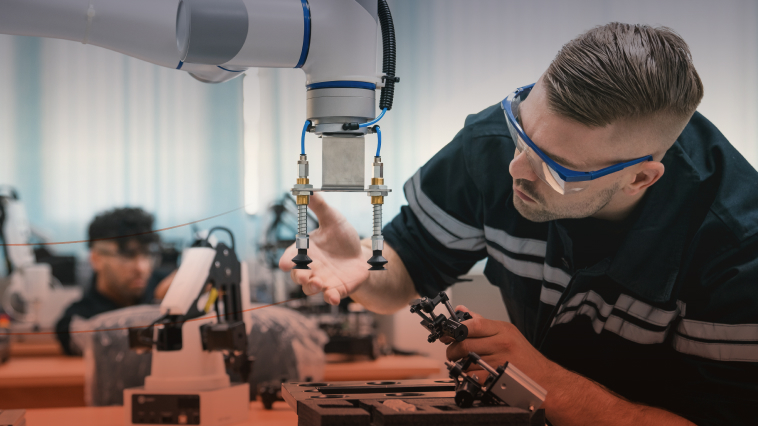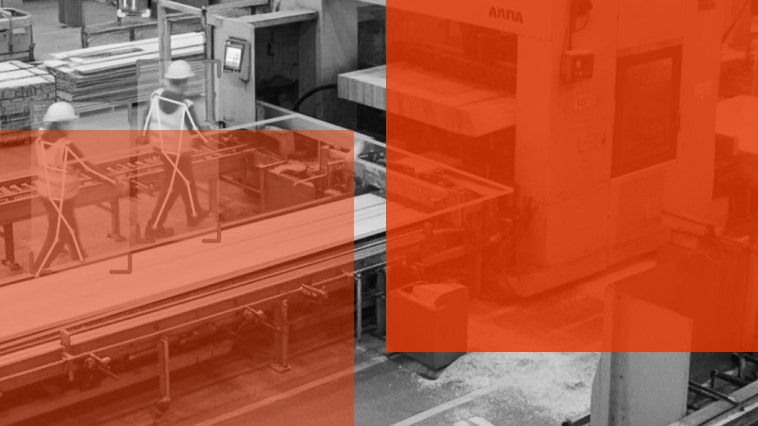Forklifts has been one of the most commonly used tools in today’s workplace environment. From heavy manufacturing to retail store rooms, forklifts help teams safely move heavy loads across facilities. However, the forklift pedestrian safety is often misunderstood or overlooked. Today, many companies are considering going forklift-free and seek alternative autonomous options.
But the transition will likely to be costly and because of that, many EHS teams are turning to AI-powered workplace safety software to enhance forklift pedestrian safety operations these days. But how exactly can computer vision AI ensure forklift-pedestrian safety? Let's explore together!
Understanding the risks of operating a forklift near pedestrians
Although smaller than a car, forklifts weigh on average about 9,000 lbs and can weigh upwards of 20,000 lbs in some configurations.
Their agility and size can cause frontline workers to underestimate the damage that can be done during a collision or tip-over. Even minor forklift collisions, especially with pedestrians, can cause severe injuries like fractures, sprains, and strains.
Forklifts were involved in 67 work-related fatalities in 2023, along with 24,960 DART cases—including 15,480 days away from work (DAFW) cases—between 2021 and 2022.
Administrative controls like forklift/pedestrian mapping and creating forklift or pedestrian-restricted areas have been common attempts to help curb these risks.
However, outside of occasional audits, it is hard to validate that these controls are helping to eliminate forklift pedestrian safety risks.
Typically the gaps of faulty pedestrian forklift controls are only captured via near-miss reporting where data is limited. However, the use of computer vision AI can provide a more comprehensive understanding of the risks.
How to enhance forklift pedestrian safety with AI
Forklift-pedestrian interactions can be some of the most dangerous, yet overlooked, risks in the workplace. While many of these interactions are safe, the few that aren't often stem from risks that were never properly identified. Here's how Intenseye’s AI-powered workplace safety software helps EHS teams who are seeking for a safety system that can act as a pedestrian detection system and capture blind spots.
- Detect unsafe proximity in real time: Using computer vision AI, Intenseye’s “dynamic delimitation” use case identifies when forklift operators and pedestrians come too close within a defined area—bringing visibility to moments that would otherwise go unnoticed.
- Surface near misses and build risk maps: These interactions help reveal uncaptured near misses and can be used to create dynamic forklift/pedestrian maps, highlighting both high-risk and safe zones across your facility.
- Get real-time alerts, wherever you are: Intenseye sends immediate notifications to EHS teams via SMS, email, or even smart speaker integrations—so action can be taken right away.
- Understand your true risk profile: Quantifying forklift-pedestrian interactions allows safety leaders to get a clear picture of where their risks lie—not just what gets reported.
- Visualize patterns with heat maps: With Intenseye’s heat map feature, users can visually pinpoint exactly where unsafe behaviors and near misses are happening across the facility.
- Spot systemic issues hidden in plain sight: Even when most behaviors are safe, unsafe events can cluster in areas where risk was underestimated. Heat maps help uncover these problem zones.
- Drive continuous improvement with data: By trending large volumes of interaction data, site teams can objectively evaluate how effective their current controls are—and use that insight to audit, adjust, and improve continuously.
Outside of traditional engineering and administrative controls, many companies are turning to AI-powered EHS management software solutions to elevate their vehicle safety program. Leveraging technology will be the theme of the next wave in safety management, and its possibilities are vast.
By leveraging AI-powered safety management software, companies can make significant progress in enhancing forklift and pedestrian safety, making the workplace a safer place for everyone.
Leaders who are using this technology to help improve safety at their sites are uncovering previously unseen issues, and quickly rectifying and auditing their effectiveness. Intenseye is one promising tool leaders should add to their toolbox when thinking about improving pedestrian and forklift safety.
To learn more about us and utilize computer vision for forklift and pedestrian safety, schedule a demo with us.



